Opening Remarks
CHINA’S ATYPICAL RISE
Dominating East Asia Without War
Chong-Pin Lin
Assurex Global Asia/Pacific Conference,
January 17, 2018, Mandarin Oriental Taipei
另類大國崛起:北京不戰而勝而主東亞
2018年1月17日 國際企業集團 Assurex Global
亞太年會 主題演講
開場白
Last month, the president of Sri Lanka handed over to China Hambandota, an important port with the potential of becoming a naval base, for $292 million U.S. dollars to the chagrin of India, Japan and the U.S..
Interestingly, he, when elected president in January 2015 had suspended the port project with China, which had been previously launched by his predecessor.
Why did he flip flop?
In June last year, the flagrantly anti-China prime minister of Japan, Shinzo Abe, indicated his willingness to cooperate with China on its Belt Road Initiative, which Abe had previously resisted doing.
Why did he shift his anti-China posture?
At the end of last August, Indian prime minister Narenda Modi suddenly ended the border standoff between Indian and Chinese troops in Daklom that had begun in June.
He then ordered Indian border troops to learn 50-60 Chinese sentences to avoid future misunderstanding between the two sides.
Five days later, he appointed a new defense minister in the morning, and then left for China, arriving in Xiamen late in the evening to attend the BRICKS summit, along with leaders from Russia, Brazil and South Africa, which was hosted by Chinese president Xi Jinping.
A month later, the new defense minister of India greeted the Chinese soldiers on the Sino-Indian border with a “Namaste”, which means “I bow to you”.
Why did Modi and his defense minister take these actions accommodating China?
COMMON DENOMINATOR
The common denominator of all three cases is China’s economic instrument employed to promote its regional influence.
●Sri Lanka, incapable of paying the mounting debt to China, succumbed to Beijing’s offer for the Hambandota Project .
●Japan’s Abe after US withdrew from the Trans-Pacific Partnership under President Donald Trump began to feel cooperating with China economically and
otherwise more attractive and even necessary.
● India’s Modi did not want to miss attending the BRICK summit hosted by China for its potentials of economic benefit to India.
This is only part of a bigger picture.
CONCLUSIONS
1. China’s grand strategy in the 21st century is dominating East Asia without war.
Aversion to war-fighting, rooted in history, is observed to reduce resistance to China’s rise .
2. China’s rapidly advancing military capabilities serve not at the front but as the backbone of its extra-military instruments.
3. China’s guideline for contending with neighbors is “struggle without breaking”.
4. China’s extra-military instruments include most prominently those of economy, but also of diplomacy, psychology, media, and characteristically culture – professional, popular, and even spiritual culture such as religion.
5. Religion as policy instrument, coming to the fore under Xi Jinping, aims to promote domestic stability, and to enhance Beijing’s international image.
6. Xi’s two-pronged Taiwan tactics, in the wake of the 19th Party Congress, are eing implemented with new vigor. The objective is to alter Taiwan’s public opinion in favor of cross-strait integration without war.
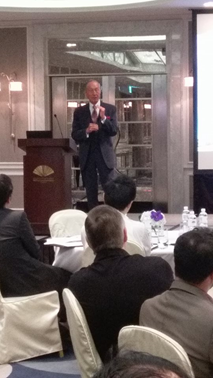
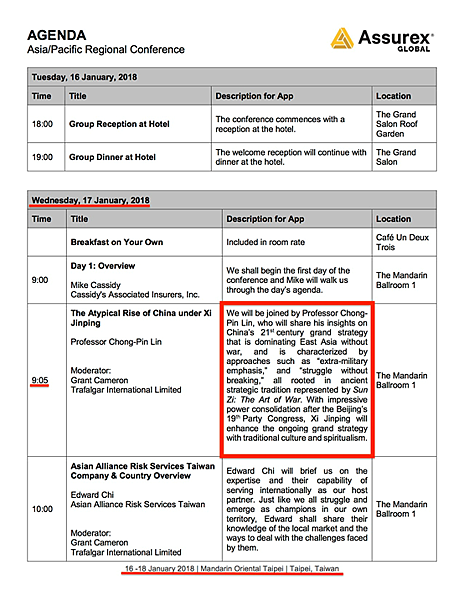
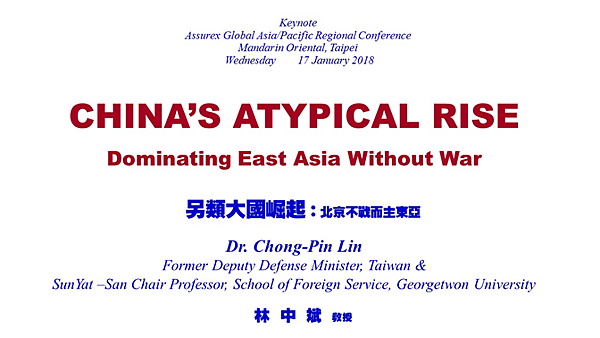

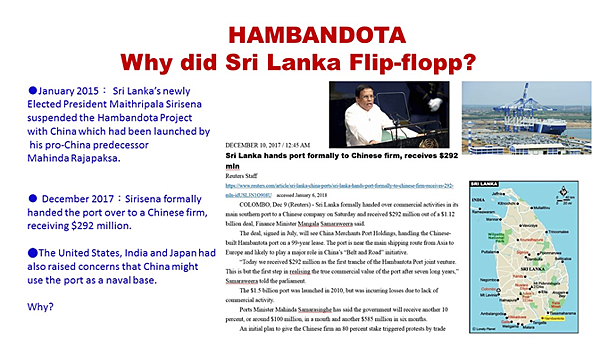
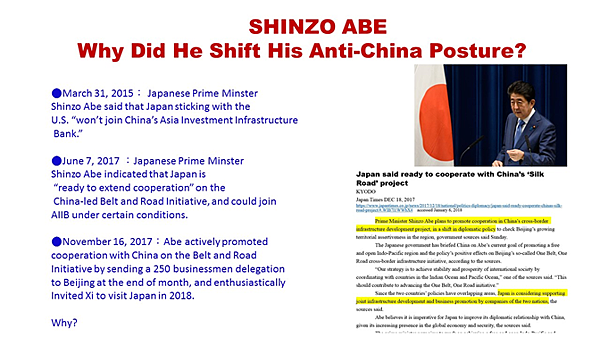
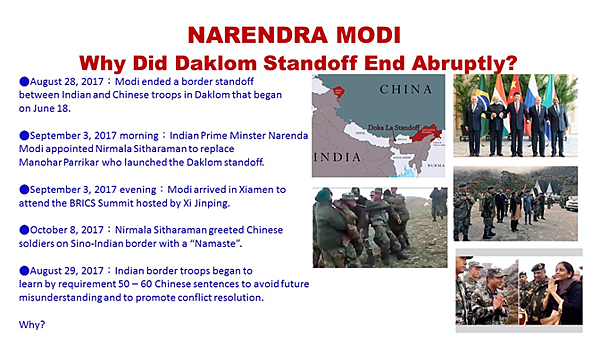
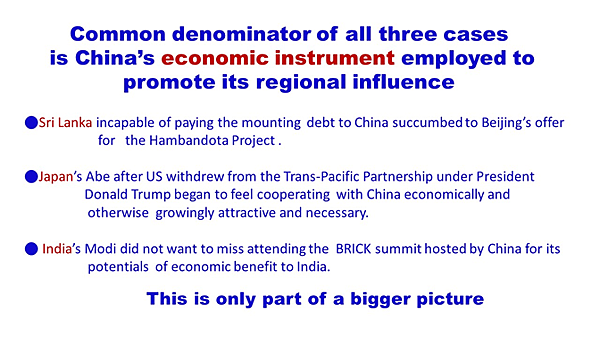
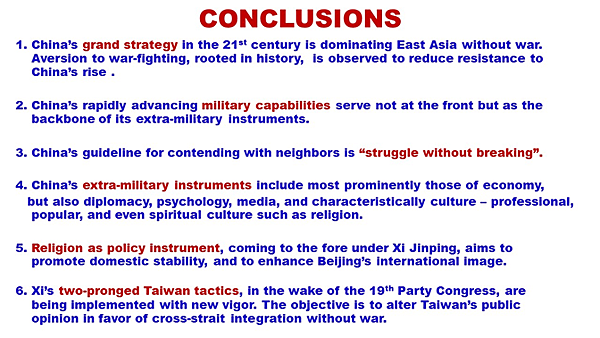
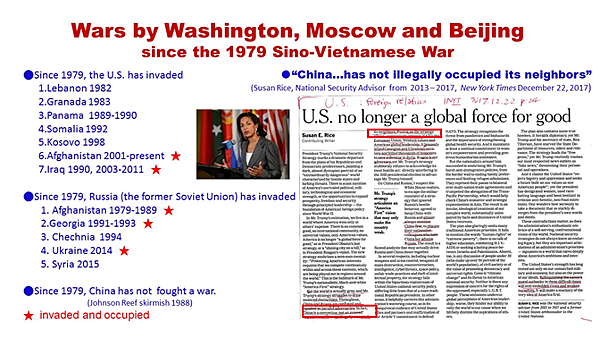
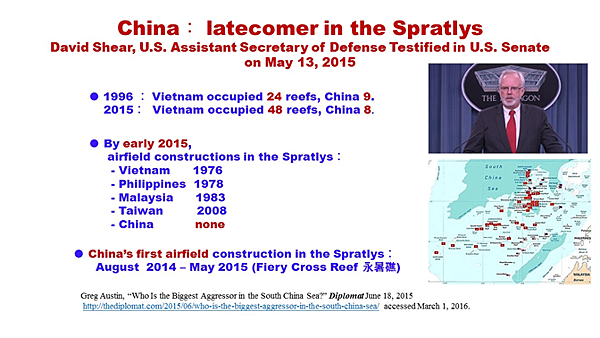
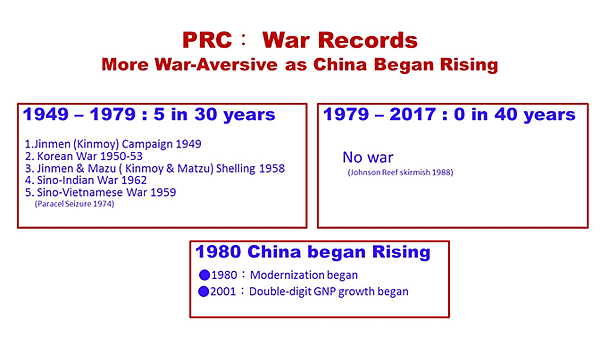
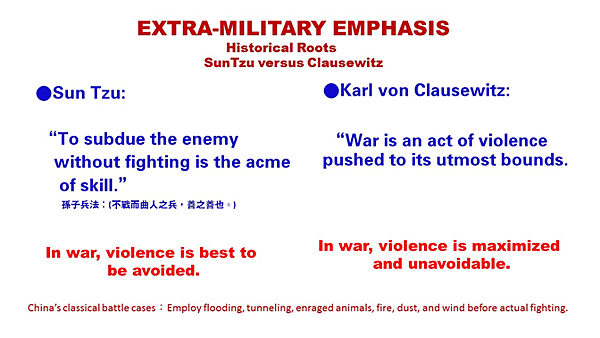
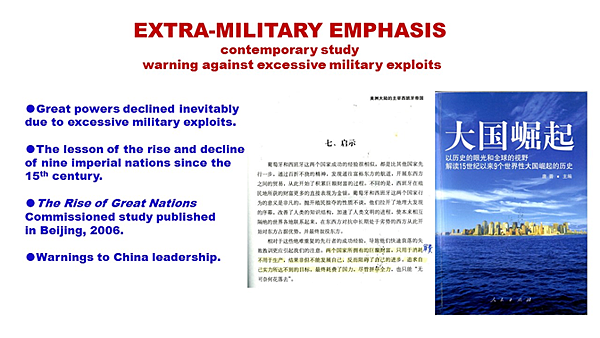
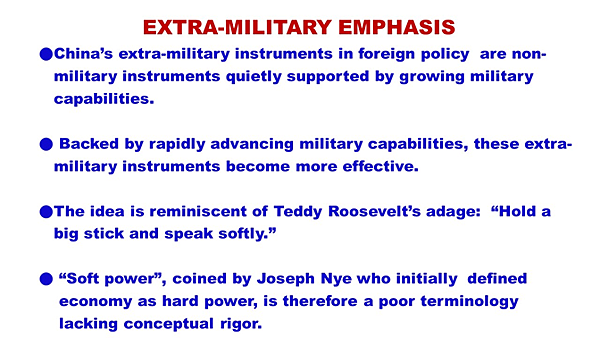
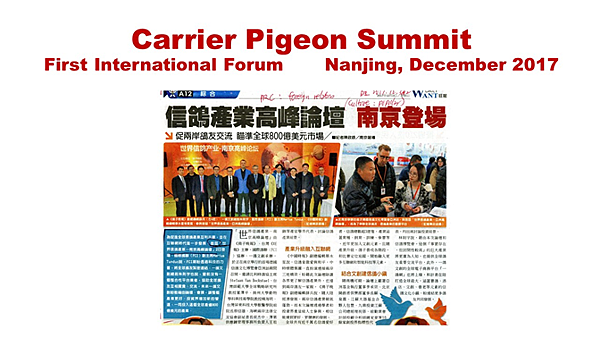
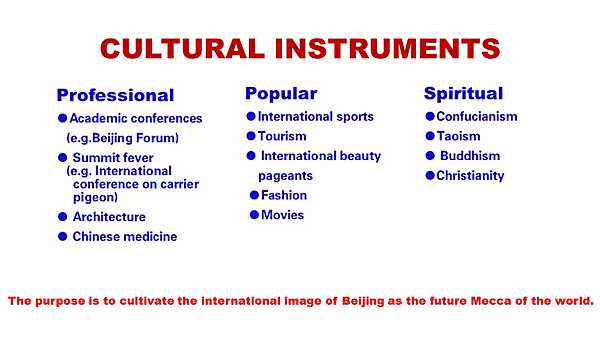
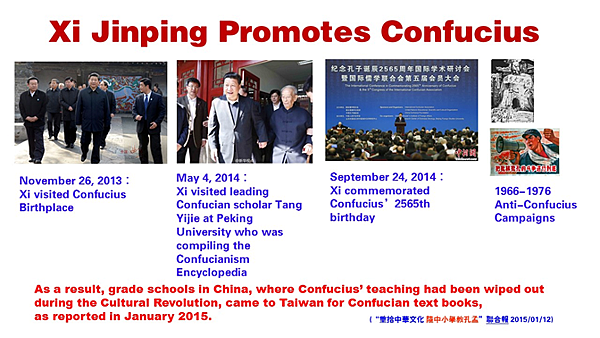
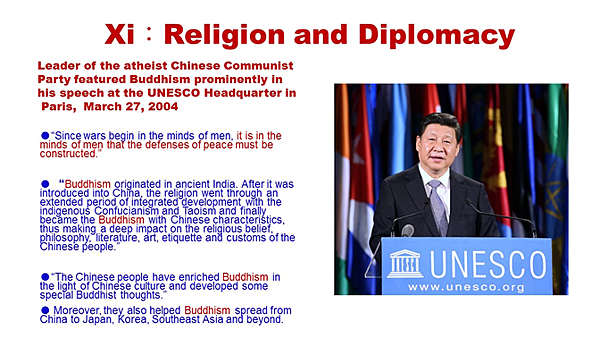
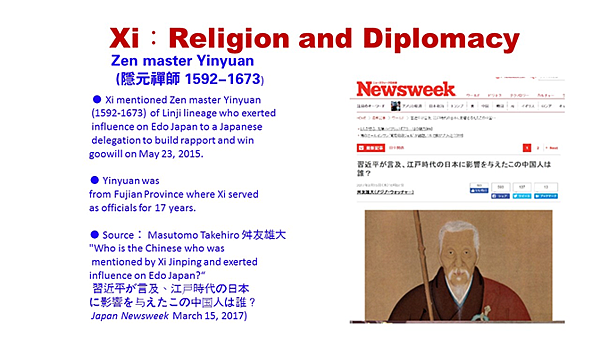
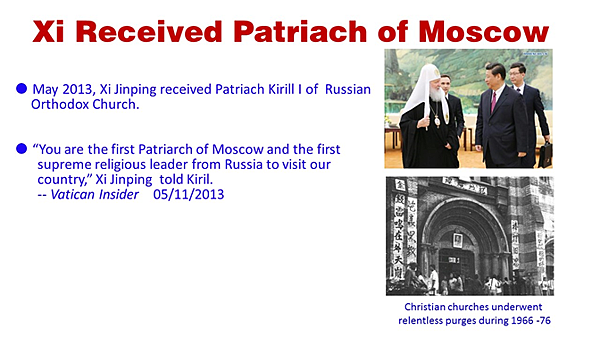
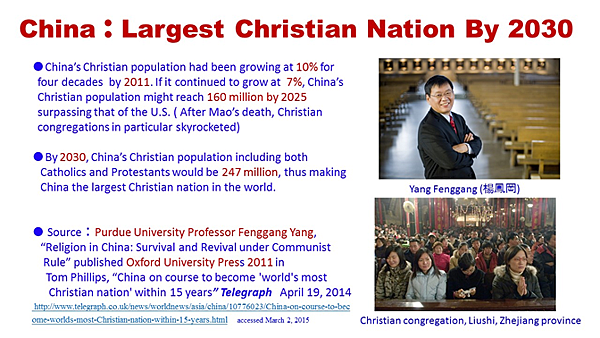

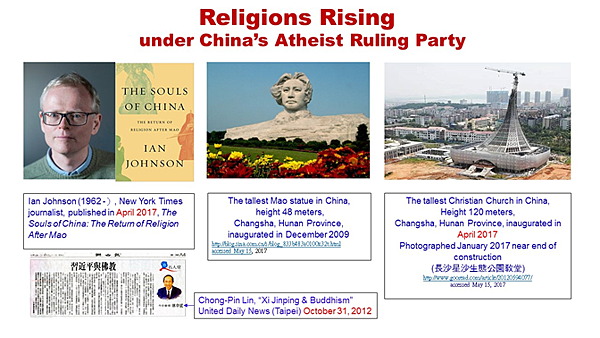
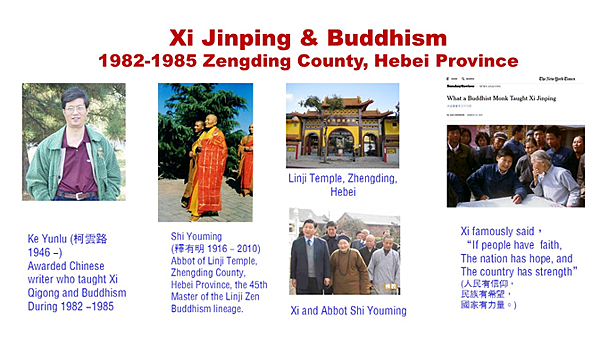
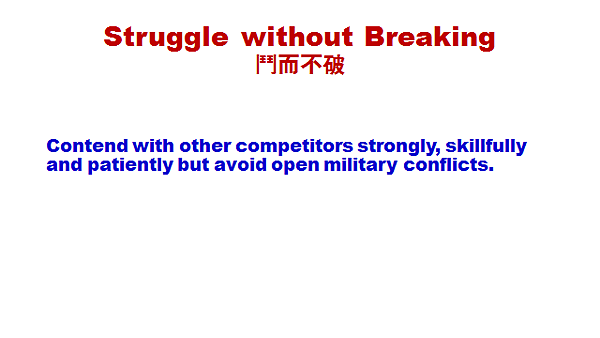
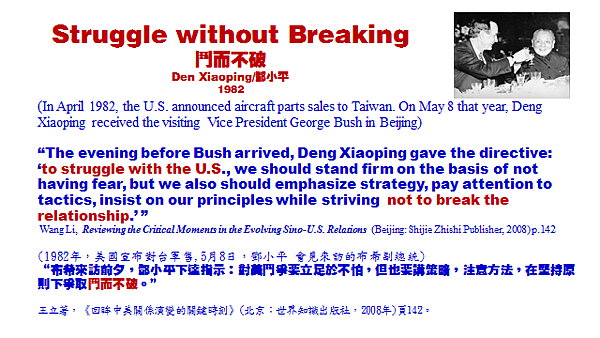
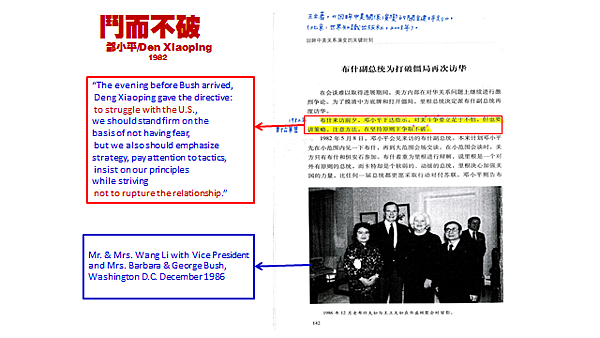
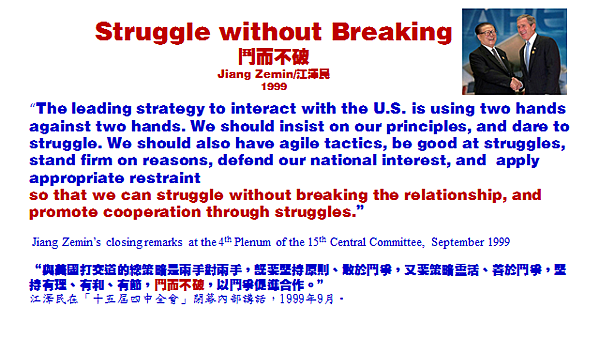
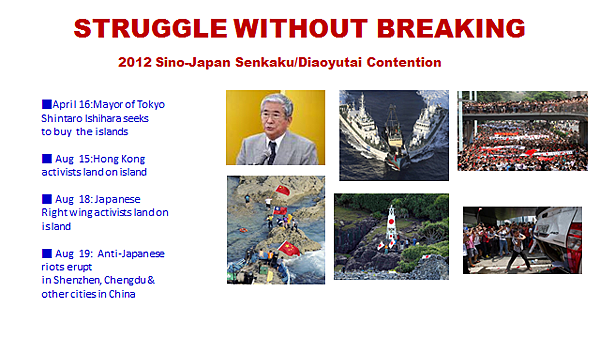
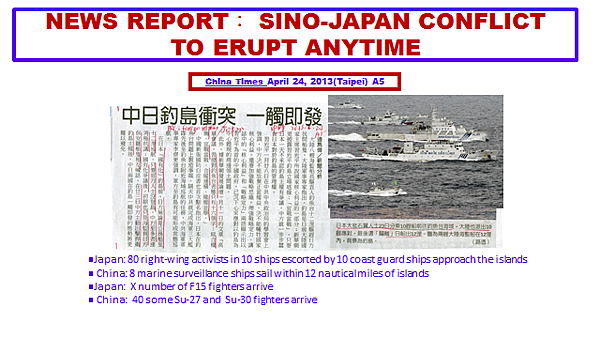
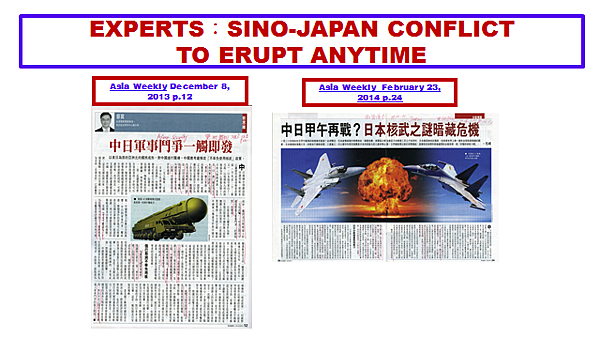
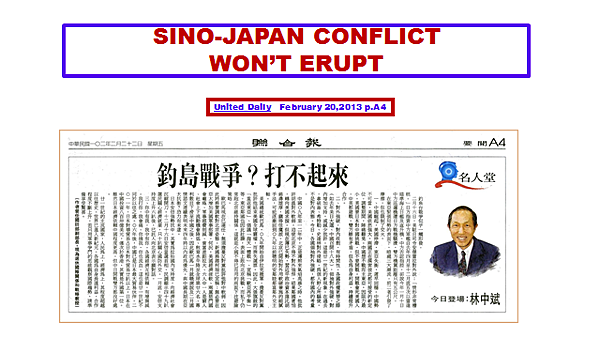
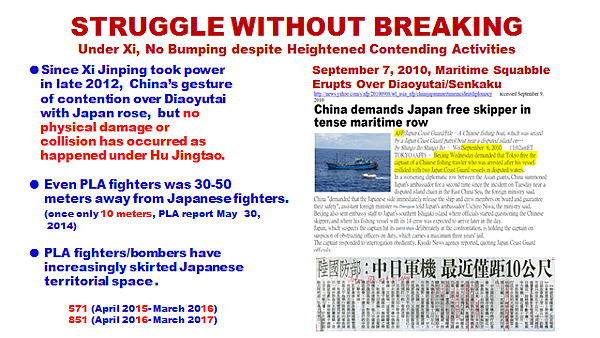
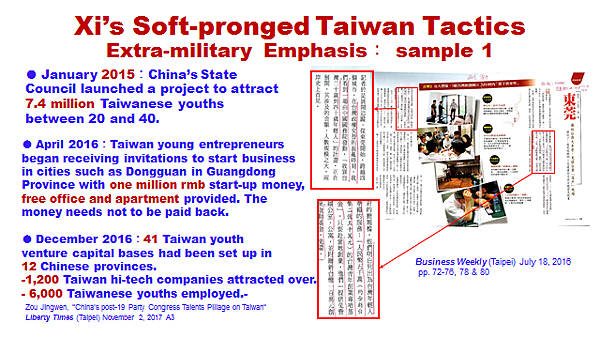
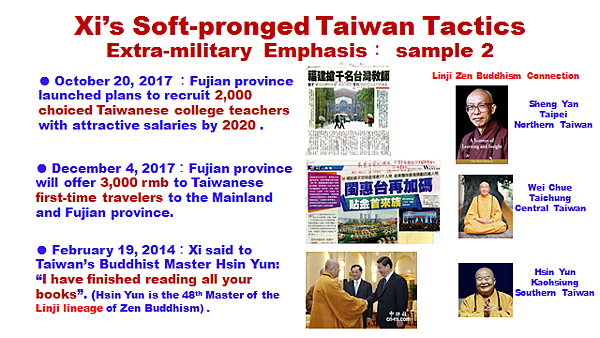
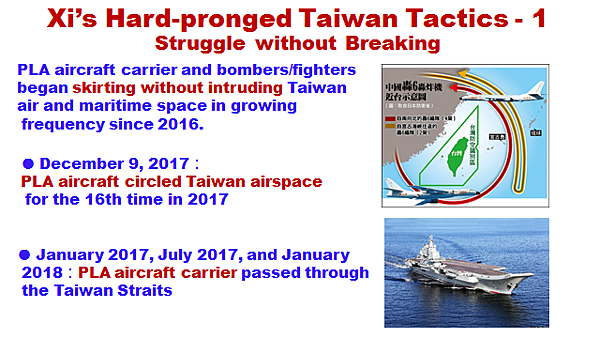
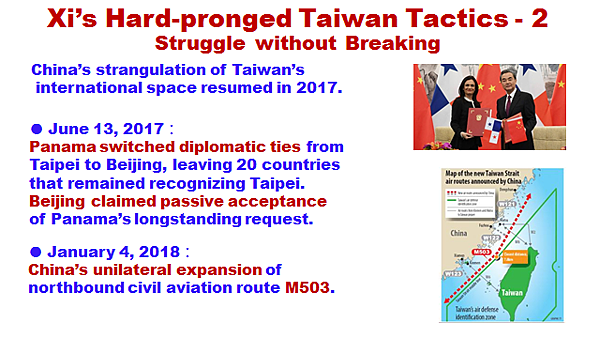
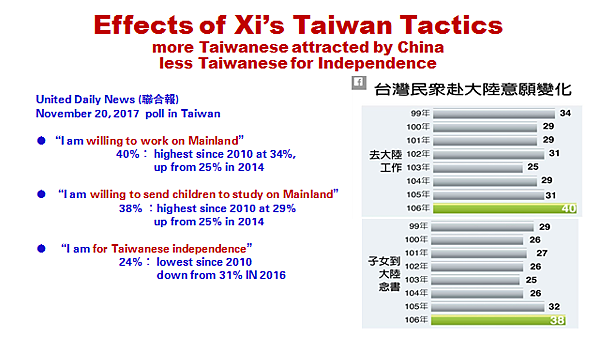

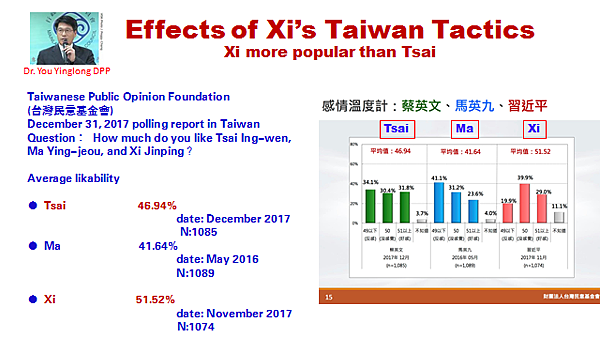
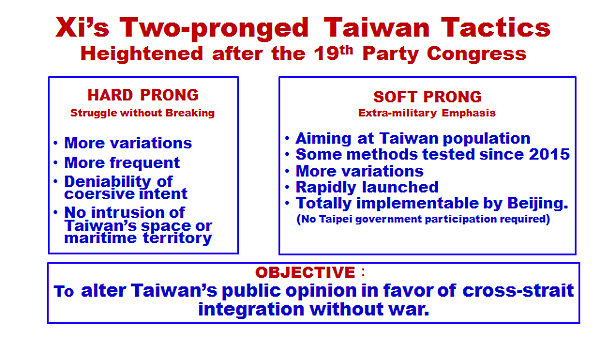
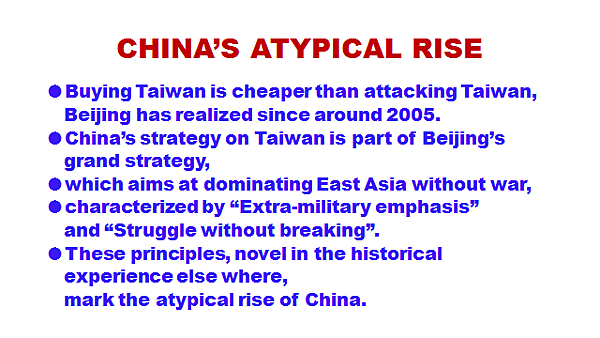



 留言列表
留言列表


